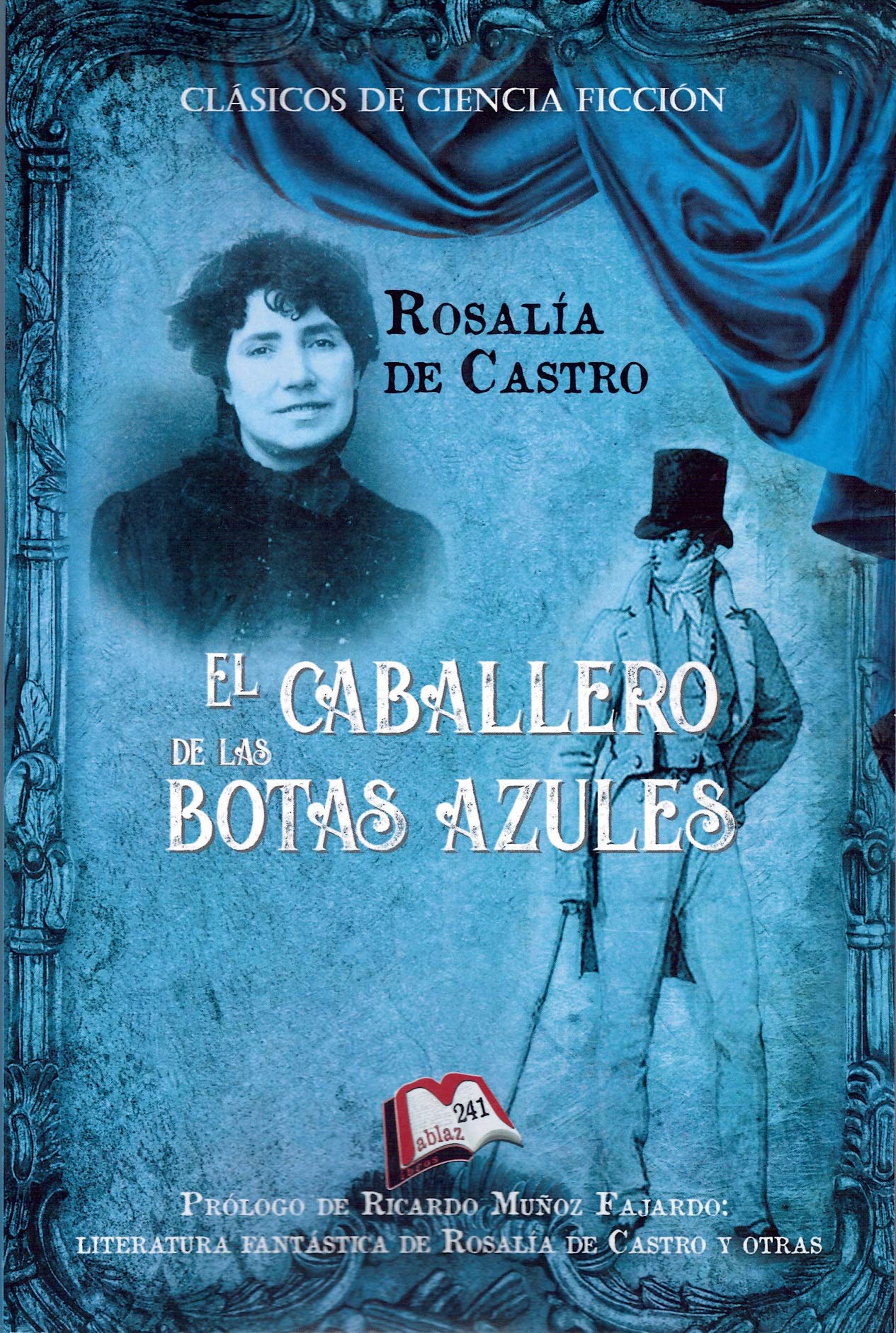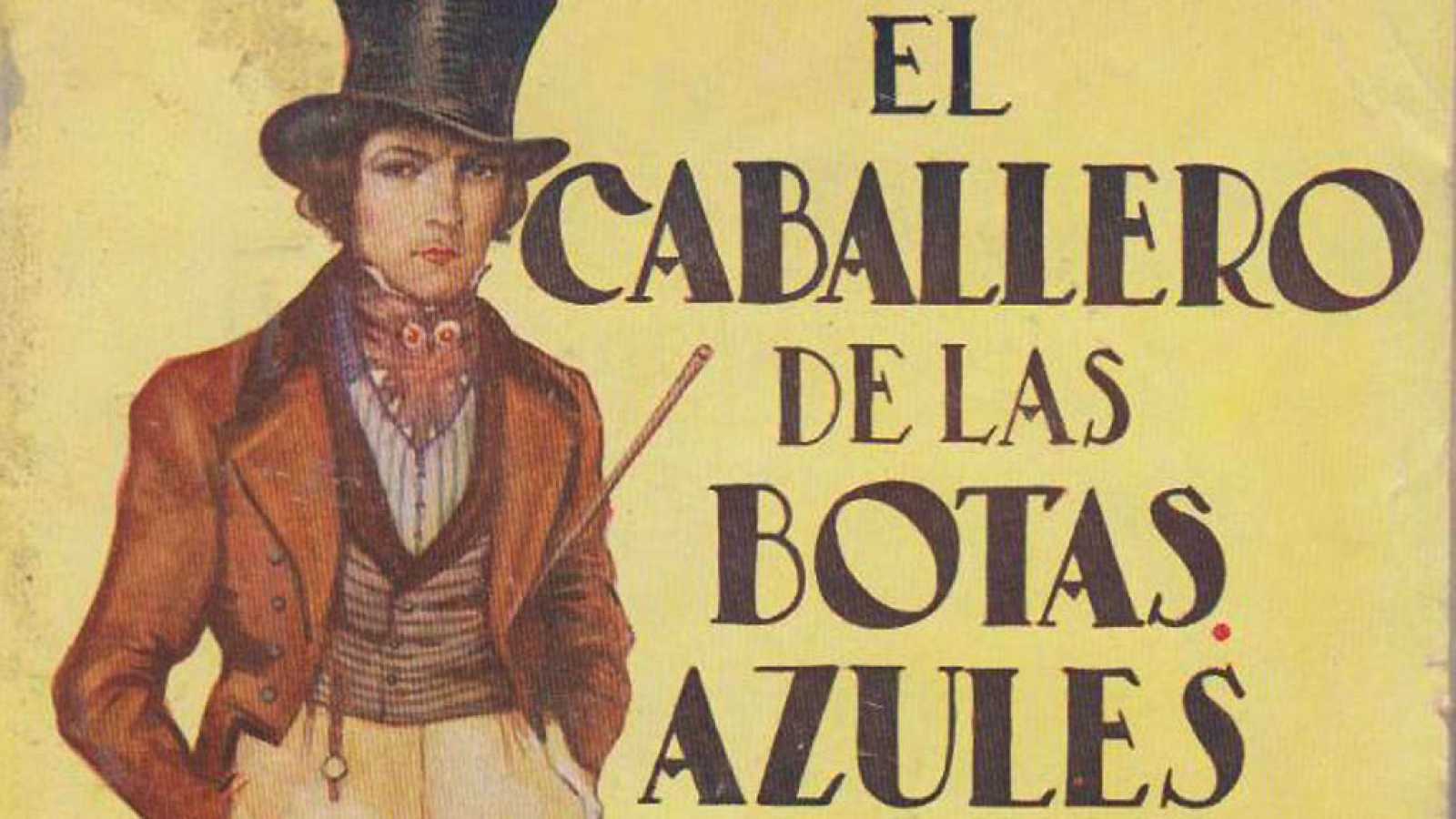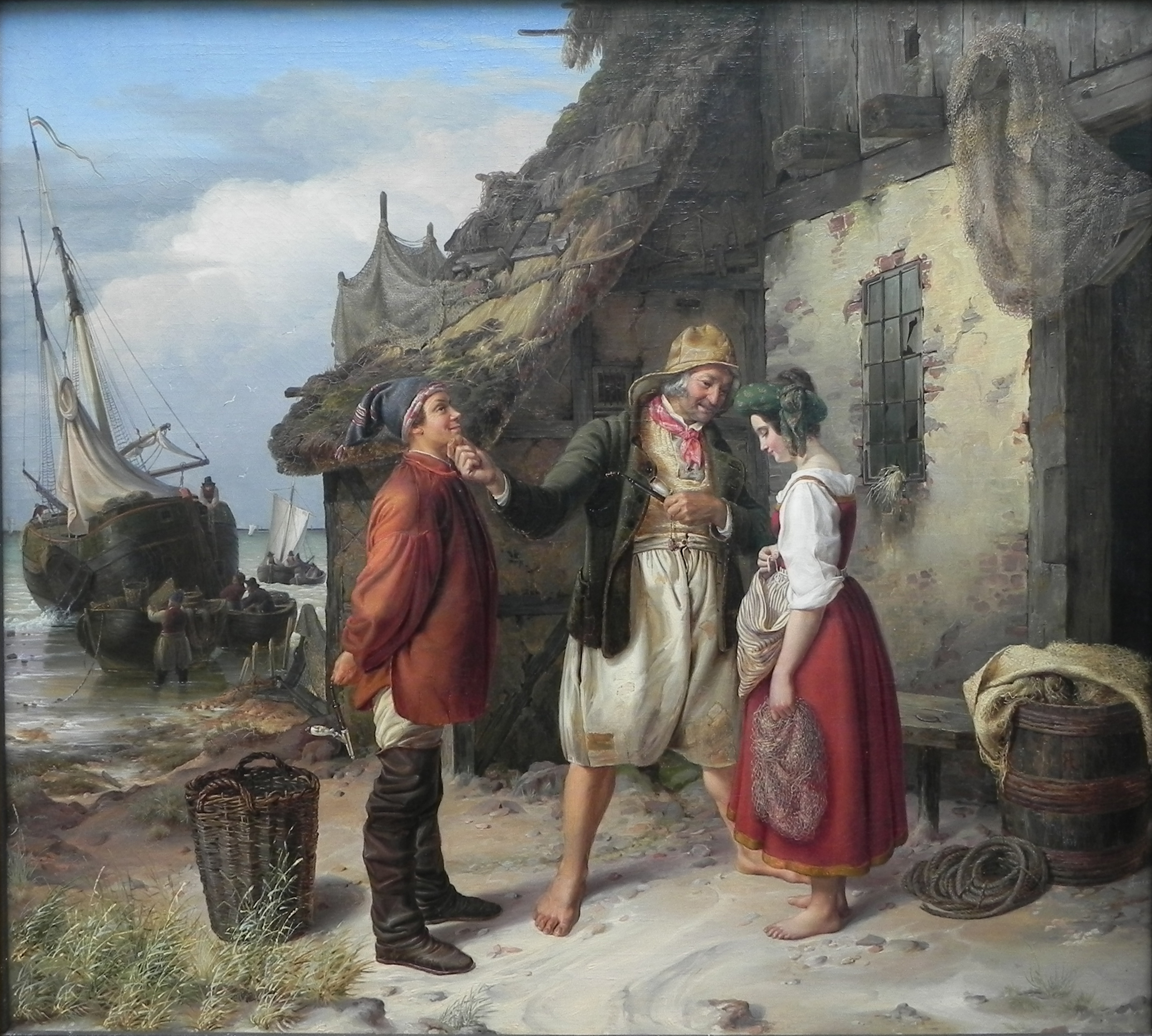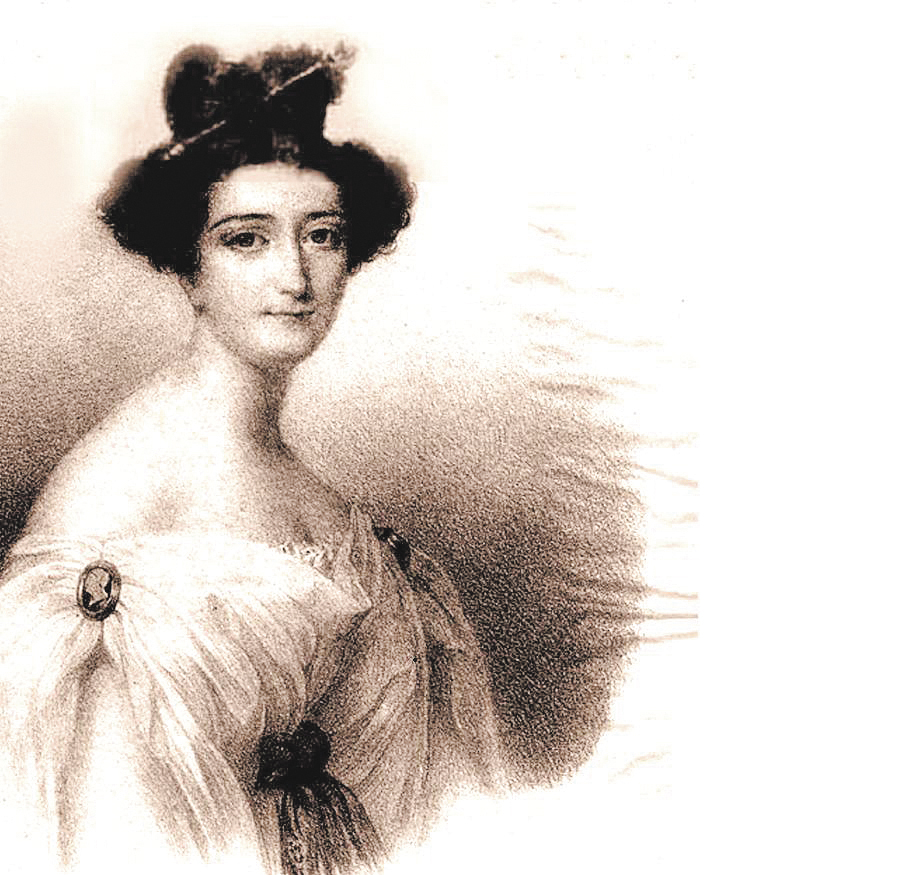The knight in the blue boots it is an ideological symbol, capable of demystifying the social and economic airs of XNUMXth-century Madrid society. Keep reading and you will discover all the details about the most important work of the Spanish writer Rosalía de Castro.

A strange story by Rosalía de Castro.
The knight in the blue boots
The book The knight in the blue boots belongs to the Spanish writer Rosalía de Castro. Basically, it is a novel full of fantasy through which the author captures all the social sensitivity that characterizes her.
About the author
María Rosalía Rita de Castro was born in Santiago de Compostela, Spain, in 1837. She was the illegitimate daughter of a priest and a low-income noblewoman.
Throughout her life, the Spanish and Galician language writer faced serious health problems. However, these did not prevent her from publishing her first book at the age of 20.
In this regard, we can say that her first work, which she called La flor, marked the beginning of a new life for Rosalía de Castro. Well, just a year after its publication, she married the literary Manuel Martínez Murguía.
In this way, her husband accompanies her throughout her life. He was her support so that she continued writing not only this type of narrative made prose, but also poetry.
However, fate wanted the illnesses that afflicted Rosalía de Castro to end her life at the age of 48. Thus, the author dies in Padrón due to cervical cancer.
Finally, Rosalía de Castro is considered today as a maximum representation of the poetic renaissance of the Galician language. As well as Spanish romanticism and contemporary Spanish poetry.
Narrative style
Rosalía de Castro's narrative style involves both vulgarisms and hyper-Galleguisms and Castilianisms. Similarly, the use of lexical and morphological variations is common, which can often be considered as spelling errors.
It is necessary to clarify that the work of this peculiar writer did not always obtain the recognition it deserved. Well, at her time, Rosalía de Castro was marginalized and underestimated.
This was mainly due to the fact that the Galician language was part of the lost tradition of Spain. On the other hand, recovering it supposed a superior effort, in addition to a social loss of prestige for the woman who tried it.
However, she is remembered for her feminist style and her strong social commitment. In addition to her constant criticism of the values and lifestyles of the aristocracy and the upper middle class of Spain.
If you want to know a little more about the history of this enigmatic writer, I invite you to watch the following video.
About The Knight in Blue Boots
The knight in the blue boots It was published in Spanish in 1867. It is considered the best prose work by Rosalía de Castro.
The narrative of this novel is located in the city of Madrid in the mid-nineteenth century. She makes special reference to the aristocratic society of the time.
Thus, The knight in the blue boots constitutes a strange tale composed of various lyrical stories - fantastic. Through which Rosalía de Castro mixes realistic satire of customs with free imagination.
Similarly, the author touches on important issues such as hypocrisy, vanity, love, the ignorance of Madrid society and, in a special way, emphasizes the nonsense of the serial literature of the time.
In this regard, it is important to mention that The knight in the blue boots It is composed of a prologue, called A man and a muse, and 24 chapters. In addition, the work shows the ironic and sarcastic style that Rosalía de Castro usually captures in her characters.
Finally, The knight in the blue boots mixes two literary styles: the fantasy novel and the Cervantes model. To better understand these concepts, we will specify the following:
the prologue
The prologue of The knight in the blue boots constitutes a dialogued literary essay, as a dramatic scene, without reference to time or space. Through this philosophical dialogue that occurs between the Duke of glory and the muse, it is possible to understand the social and literary aspects that will be addressed in the following chapters.
On the other hand, it is important to note that some literary specialists claim that The knight in the blue boots can be perceived as two superimposed novels. In this way, the prologue corresponds to the second novel, which interweaves the limits between the real and the fictional, and shows in a fantastic way what comes next.
all 24 chapters
The chapters that follow the prologue of The knight in the blue boots they are fragmented scenes, which some call the first novel. Throughout its development, the author tells the story of the Duke of Glory, which details the customs of Madrid society, especially those related to the lifestyle of the aristocracy and the bourgeoisie of the time.
To the same extent that Rosalía de Castro ridicules these lifestyles through the main character of her work, she exalts the meaning of honesty and humility of simple people. In addition, she fights against what she considers to be bad literature that corrupts society.
Finally, at some point in the first novel, the appearance of The Book of Books is announced, a masterpiece that contains all the works in the world. However, he does not appear until the last chapter, further ridiculing one of the central themes of the story, such as the serial literature of Spain.
Synopsis
The knight in the blue boots tells the story of a fantastic character who calls himself the Duke of Glory, who makes his appearance in the Spanish aristocratic society of the mid-nineteenth century.
The Duke of Glory has a very peculiar appearance made up of striking blue boots, an eye-catching white bow and a cane with a rattlesnake crown. Furthermore, his radiant personality and extraordinary physical attractiveness make him favorably received in all the palaces and social gatherings in the city of Madrid.
In this regard, it is necessary to note that the intention of this strange character is to enjoy recognition and posthumous fame, for which he implores the muse to grant him inspiration. She does not completely agree to her request, however, she endows him with a creative genius and a curious outfit with which he can attract the curiosity of Madrid society.
In this way, once the Duke of Glory completes his task of denouncing and exposing to public ridicule both the customs of society and the disastrous state of Madrid's literature, he disappears in the same way as he had arrived. Upon leaving, he breaks all the bourgeois schemes of Madrid and becomes a literary icon, being remembered forever as a madman with great wit.
Review
The knight in the blue boots It is an innovative work, through which Rosalía de Castro reveals the social hypocrisy and her contempt for the serial literature that prevailed in the city of Madrid in the mid-nineteenth century. In general terms, The knight in the blue boots It is an unusual and original novel, capable of surpassing the limits of realism that began to take shape in Spain around the year 1850.
Characters
As in all novels, to understand the message that the author wants to convey, it is necessary to pay special attention to the individual stories of the main characters. about and about The knight in the blue boots, we can mention the following:
the duke of glory
He is a poet obsessed with fame and recognition, who goes to the muse for inspiration. However, in response to his request, this kind of fantastic hero receives an interesting task, as well as a peculiar physical appearance composed of striking blue shoes, a unique white bow and a cane with a bell.
In this regard, it should be mentioned that this is how the protagonist of The knight in the blue boots get creative genius. In addition, from that moment he is responsible for ridiculing the lifestyles of the aristocratic and bourgeois society of Madrid, as well as ending the serial literature of the time.
For more information on this interesting literary style, I invite you to read our article on the Literature of twine.
In exchange for the good result of his new mission: to represent the greatest and most ridiculous comedy of the century, the muse offers him the triumph and the perennial applause. To which the poet immediately agrees and becomes the strange Duke of glory, capable of captivating the wills of the members of the aforementioned societies with his extraordinary personality and attractive appearance.
Finally, it is necessary to mention that to finish his task, the Duke of Glory gathers all the copies that exist related to novels by delivery and buries them in what he calls The Well of Modern Science. After that, he disappears from Madrid life.
the muse
He is a classic supernatural character who, in response to the request of the famous amateur poet, endows him with creative genius and an extravagant and fantastic appearance with which he is able to captivate any audience. The muse appears in the form of novelty and promises him that he will succeed if he performs the most ridiculous and unique comedy of the entire century, to which the poet agrees and immediately becomes the Duke of glory.
In general terms, the muse represents the antithesis of poetry and constitutes the parody of all the events that are narrated in The knight in the blue boots. In addition, she is fickle, grotesque, ironic and unique in her style.
Lord of Albuerniga
He is a sybaritic philosopher, a retired member of the court and a fan of idle life. The Lord of Albuérniga is celibate by his own decision, detached from all the people around him and, above all, he is a lover of good and peace in general.
Lady of Vinca-Rúa
She is a worthy representative of the aristocratic lifestyle, full of luxuries, leisure, fashion, gossip, waste of time, attendance at theaters, among others. The Duke of Glory confronts the Lady of Vinca-Rúa for her resistance to work, as he states that for reasons, including ethical and religious, it should not be foreign to any person, regardless of the social class to which they belong. .
Mariquita
She is a low-income teenager who falls madly in love with the Duke of Glory, to the point that she spends her days looking for him among the tombs in the cemetery where she met him.
Mariquita, before the sudden infatuation, refuses to continue with the relationship that society imposed on her. However, the Duke of Glory convinces her to go back to her fiancé Melchor de Ella and start a family.
On the other hand, this sweet character is the way that the writer Rosalía de Castro has to make fun of love commitments, which are exposed in the serialized novels of the time. In this regard, she considers that serial literature constitutes a scam for society.
Melchor
He is Mariquita's fiancé, through whom the love conflicts of the time are personified; especially those concerning the imposition of couples by the Spanish society of the nineteenth century. In general terms, Melchor is a young man with a languid appearance who assumes with true happiness and commitment the responsibility of marrying Mariquita.
Pelasgian
Pelasgo is the director of a famous newspaper in Madrid, with an unattractive physique, but a fine appearance; he also enjoys the pleasure of teasing. When he learns of the arrival of the Duke of Glory, his first intention was to get the scoop, however, he receives a note written in gold letters indicating otherwise.
Dorothea
She is the owner of a school in charge of instructing low-income young women in Madrid. Doña Dorotea is modest and demure, she is also a fan of false appearances and is Mariquita's aunt.
Countess Pampa
She represents the elegance and aristocratic etiquette of mid-nineteenth-century Madrid society. Countess Pampa usually organizes high-ranking celebrations where the wealthiest members of the aristocracy and the bourgeoisie of the time meet.
Casimir
She is a beautiful rich and capricious young woman whom many admire despite her haughtiness and lack of modesty. Casimira comes from a family of Russian emperors, hence her haughty and tyrannical attitude.
Marcelina
She is a noble and simple woman who usually accompanies Casimira, making a real contrast between the two. Well, Marcelina is a Cuban Creole who loves her land with devotion and never tires of talking about its benefits.
Ambrose
He is a poet of the time, accused by Countess Pampa of promoting a type of literature lacking in good taste, boring and annoying. However, he does not take notice and remains true to his style.
In general terms, continue mentioning each of the characters involved in the plot of The knight in the blue boots it is a fruitless effort. Well, the only purpose of all of them is to play a role in accordance with each of the objectionable aspects that we have already mentioned before.
Social criticism in The Knight in Blue Boots
Rosalía de Castro manages to capture in her work The knight in the blue boots all the social sensitivity that it possesses, touching on topics such as: moral justice, vices, leisure, fashion, education, among others. Similarly, he exposes the lifestyle of high society ladies and bourgeois ladies, as well as the decadent romantic and classicist style of the literary works of the time.
On the other hand, through the Duke of Glory, the author of The knight in the blue boots it condemns the inequality and social oppression that arise from the division of society into working and leisure classes. Similarly, she criticizes the superiority complex that some people from the upper and middle classes have, just because they belong to other sectors of society.
Additionally, the strange story of Rosalía de Castro exposes the lack of modesty and the foolishness of the aristocratic and bourgeois youth of the Madrid society of the time, as an example of the prejudices that exist in it. Which leads both the ladies and the young ladies of society to imitate lifestyles that do not belong to them, and for which they do not have the necessary purchasing power either.



